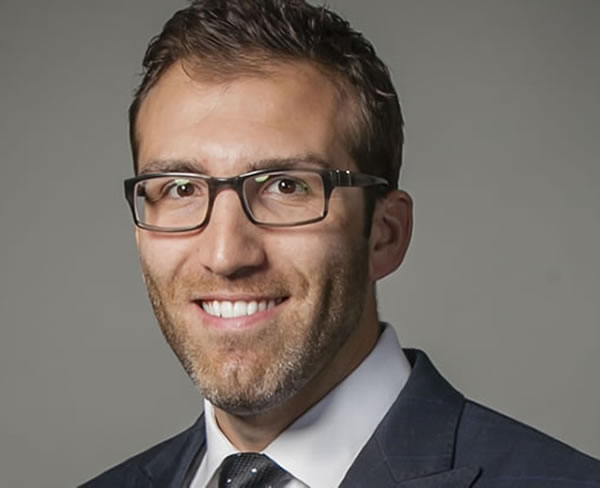One of the most difficult jobs in commercial real estate involves turning underutilized, outdated facilities into modern assets. And that’s exactly what Brad Giambrone, assistant director of operations and maintenance at Kaufman Organization in New York City, specializes in.
Turning under-performing buildings into Class-B and Class-A assets is what he enjoys most. “Breathing new life back into nearly dead properties never gets old,” says Giambrone. “It’s fulfilling to bring these buildings back to a point where tenants can lease space and build their businesses inside the walls.”
Q: How did you get started in facilities management and operations?
A: My dad was a facilities manager at my old high school. As a child, I was always in his shop. From an early age, I was exposed to that environment – even though that wasn’t what I thought I wanted to do. When I graduated from college, my first job was working in sales and PR for a moving company in New York City. The owner has been a great mentor but I got to the point in my life where I didn’t want to be in sales anymore. A close friend of mine worked closely with his father, operating a company that owns and manages commercial properties. I always looked up to them and what they did; it seemed exciting. They showed me the ropes, and were a huge influence on my career. They eventually brought me on board and allowed me to manage some properties. I also helped renovate some properties. I cut my teeth with renovation and management of an eight-unit brownstone in Harlem that I was a partner on and later sold. It was a rent-stabilized, 1910 property. Nothing worked right in the building, and I had to destabilize and restore it to a decent product that could attract the expanding Manhattan market. It only grew from there. I absorbed everything I could, and it eventually led to me being here at Kaufman Organization as the assistant director of operations and maintenance.
Q: What are some of your biggest career accomplishments so far?
A: I always want to leave a creative, lasting mark on my environment. That’s the most important thing to me, and what I view as an accomplishment. At Kaufman, I’m extremely proud of the work we are doing with the Madison Square portfolio. We purchased four vacant, underutilized properties that were in severe disrepair in one of the hottest neighborhoods in New York City. Some were vacant for over 10 years. One was worse than the other– none of the building systems worked. It was like a ghost town when we first walked into the properties. People had just picked up and left, leaving coffee cups on the table and old furniture and printing presses behind. Within a year and a half, we renovated about 350,000 square feet of space with modern, new amenities, such as state-of-the-art elevators with a glass cab to view a vertical gallery, access control that integrates with elevator systems, new windows, storefronts, and smart meters. The entire shell received a facelift through a new roof and façade program.
Recently, I was a guest speaker at a New York University real estate development class. During the construction and operations portion of the class, I spoke about how I turn underutilized properties into Class-B and Class-A assets. We covered all of the steps involved, from contracts to how to modernize a building.
I’m also proud of a landscaping project that occurred at my prior company – M&R Management – a few years ago. The properties we owned and managed were mostly residential. They had nice lawns, but the landscaping was pretty sparse. My father and grandmother were big-time gardeners; when I was a child, they taught me how to garden. My team thought it would be a good idea to landscape these properties, so I taught my crew how to garden. I helped them plant all the trees and flowers. Every few months, I still receive photos of one of the plants from former coworkers. I feel that we created something really special together.
Q: What do you enjoy most about your role?
A: My job is very exciting, and allows me to be creative. We’re always trying to think outside the box and stay ahead of the curve. I enjoy problem-solving and building a really strong team. Here, we strive to be the best at what we do. That’s what gets me going: the excitement and being part of that team.
Q: What advice do you have for others in your industry based upon your experiences?
A: It’s important to lead by example and always be open-minded. You have to be hands-on, willing to get dirty. That’s how you gain respect from the people around you. You have to be sensitive to your team’s feelings; you can’t accomplish anything without a strong team around you. They need to know you’re going to be there for them when things are tough.
Always ask questions – that’s one way to continue to educate yourself. And even though you should never stop learning, I think you should be respectful of the past. It’s great to be innovative, but it’s also important to understand how it all started.
Q: Tell us about the tallest building you’ve been involved with, and the challenges it posed.
A: At Kaufman, the majority of our over 5 million-square-foot portfolio is under direct management. Our tallest building is Nelson Tower, which is the flagship at 47 stories. It was built in 1930 and boasts about 500,000 square feet. We’re undergoing a capital improvement program now at Nelson Tower, renovating the lobby, some of the interior, and upgrading our elevators. The challenge in a 1930s high-rise building is always finding space to put things. You’re trying to upgrade an occupied building that was built for a specific time and to work with specific building systems. It’s challenging to retrofit in a whole building to be competitive with a brand new building that was built to support a giant cooling tower on the roof, for example. We certainly can and have added them but you need to be creative sometimes. For me, older buildings are gorgeous and have lots of character, so it’s a trade-off.
Q: How have you seen the commercial real estate industry change over the years?
A: Our server went down a few weeks ago. We had no internet, and it was just like the old days. You had to pick up the phone to call somebody. We spent the entire day on the phones talking to people and walking down to the properties. The way we manage properties has gone through a major communications and automation evolution. Professionals in roles likes ours used to require a mix of people skills and mechanical skills. That has evolved into someone who needs to be able to write a proper email and understand a computerized BMS now. It’s exciting stuff, but it’s been a huge evolution especially for a building superintendent.
Q: What do you anticipate for the future of the facilities management industry?
A: I also see an increased focus on live-work environments in New York City. People spend more time at the office, and they want to live near where they work. The future will involve operating buildings efficiently to achieve that demand. With people spending a lot more time at work than they used to, additional stress is placed on building systems. This also translates to more maintenance requirements.
After Hurricane Irene, a lot of buildings were down. People realized how vulnerable a big building really is. I think our focus moving forward will be centered on ways to protect the asset. Buildings will become smarter, more efficient, and more sustainable.



 An award winning editor, Leah spent over eight years in senior editorial positions at both BUILDINGS magazine and ARCHI-TECH magazine. Her work has been incorporated into training and educational programs around the country. She is a graduate of University of Iowa. She is Editor at Large for High Rise Facilities.
An award winning editor, Leah spent over eight years in senior editorial positions at both BUILDINGS magazine and ARCHI-TECH magazine. Her work has been incorporated into training and educational programs around the country. She is a graduate of University of Iowa. She is Editor at Large for High Rise Facilities.